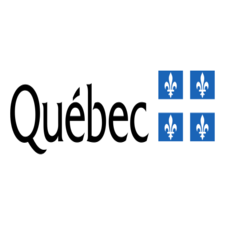MTQ
Type of resources
Topics
Keywords
Contact for the resource
Provided by
Formats
Representation types
Update frequencies
status
-

The Route Blanche is a snowmobile trail located on the Lower North Shore, constituting the only winter land link between Kegaska and Blanc-Sablon, thus bridging the road link between municipalities. The White Road is inventoried in the BGR system with the sub-route code “M”, as in this example: 00138-13-145-M1A0. Note: The Route Blanche route is already part of the “Road Network - RTSS” dataset https://www.donneesquebec.ca/recherche/dataset/reseau-routier-rtss. The need is to be able to have a metadata sheet to describe its distinction from the road network and to be able to download the data set exclusively (without obtaining the entire road network).**This third party metadata element was translated using an automated translation tool (Amazon Translate).**
-

Punctual location of the refuges on the Route Blanche. The Route Blanche is a snowmobile trail located on the Lower North Shore, constituting the only winter land link between Kegaska and Blanc-Sablon, thus bridging the road link between municipalities. Note: The White Road shelters are already part of the “Establishment” dataset https://www.donneesquebec.ca/recherche/dataset/etablissement-du-mtq (see “Refuge” in the “typetablis” attribute column). The need is to be able to have a metadata sheet to describe its distinction from other establishments in the Ministry and to be able to download the dataset exclusively (without obtaining all the institutions). **This third party metadata element was translated using an automated translation tool (Amazon Translate).**
-

Linear network representing by colors the winter road conditions on the segments of roads and highways managed by the Ministry of Transport and Sustainable Mobility (MTMD), as well as the visibility and presence of snow blades on them. Winter road conditions are updated once a day from October 15 to April 15 inclusively, between 3 am and 6 am, and whenever conditions change. Outside this period, only road conditions that are partially covered, covered, or with zero visibility are transmitted. - Continuous data: done daily between 3 and 6 am and at all changes in conditions. - Current year data: compilation of daily data for the current year. - Historical data: compilation of daily data for the following years: 2015, 2016, 2017, 2018, 2019, 2020, 2020. **This third party metadata element was translated using an automated translation tool (Amazon Translate).**
-

Punctual location of road fleets: Rest area for truck drivers, Service area, Belvedere, Rest stop.**This third party metadata element was translated using an automated translation tool (Amazon Translate).**
-

Location of port terminals; geometry, toponymy, vocation, responsible authority.**This third party metadata element was translated using an automated translation tool (Amazon Translate).**
-

Location of photo radars: - Red light monitoring device - Still photo radar - Fixed photo radar and red light surveillance - Mobile photo radar **This third party metadata element was translated using an automated translation tool (Amazon Translate).**
-

Specific location of airports, heliports, hydroaerodromes and aerodromes in Quebec; geometry, toponymy, code, etc.**This third party metadata element was translated using an automated translation tool (Amazon Translate).**
-

Road segments from the Adresses Québec geobase including attributes relating to trucking regulations issued by municipalities. The integration of updates is done periodically by the MTMD in collaboration with the municipalities. - **Transit routes** “Legend: Transit (permit)”: Roads to which access is authorized for any heavy vehicle. These roads have a minimum of restrictions on the movement of heavy vehicles. The minimum level of restriction for drivers on this network means that drivers should be encouraged to use it as often as possible. This network is to be preferred. - **Restricted roads** “Legend: Restricted”: Roads to which access is authorized for any heavy vehicle. However, these roads may include some restrictions on the movement of heavy vehicles. Example: Bridge subject to a load restriction, restricted headroom, steep slope, winding and/or narrow road, etc. - **Roads partially prohibited** “Legend: Partially prohibited”: Roads whose access is partially prohibited to heavy vehicles. The characteristics motivating such a classification may concern: *- Periods of prohibition to drive (Hours, days); **- A limit on the number of axles authorized; **- A limit on the weight of vehicles (tonnage); **- A limit on the length of vehicles authorized to drive on the road. * - **Roads prohibited** “Legend: Forbidden (except local delivery)”: Roads where access is prohibited for heavy vehicles except for local delivery needs. These roads may include restrictions on the movement of heavy vehicles. Note: These roads are identified by the road sign “Access prohibited to heavy vehicles” to which is attached a sign “Except local delivery”. - **Unclassified roads** “Legend: Unclassified”: Roads with no classification. - **Roads whose classification is not applicable** “Legend: Not applicable”: Roads located outside Quebec. Please note that road signs take precedence over this data, which is available for download and consultation on the interactive map. This information has no legal value.**This third party metadata element was translated using an automated translation tool (Amazon Translate).**
-

Location of Quebec airport runways; geometry, toponymy, code.**This third party metadata element was translated using an automated translation tool (Amazon Translate).**
-

Punctual location of relay villages. A relay village is a municipality of less than 10,000 inhabitants recognized by the Ministry of Transport and Sustainable Mobility (MTMD) which offers, with the help of its merchants, a variety of services and a pleasant and safe stopping place. In addition to basic services, the Villages-Relais offer travelers tourist, cultural and natural attractions, quality facilities and an environment that reflects their image, thus giving visitors the option of extending their stay. The Village-Relais concept was developed in order to reduce the effects of fatigue while driving and thus improve safety on the roads. **This third party metadata element was translated using an automated translation tool (Amazon Translate).**
 Arctic SDI catalogue
Arctic SDI catalogue